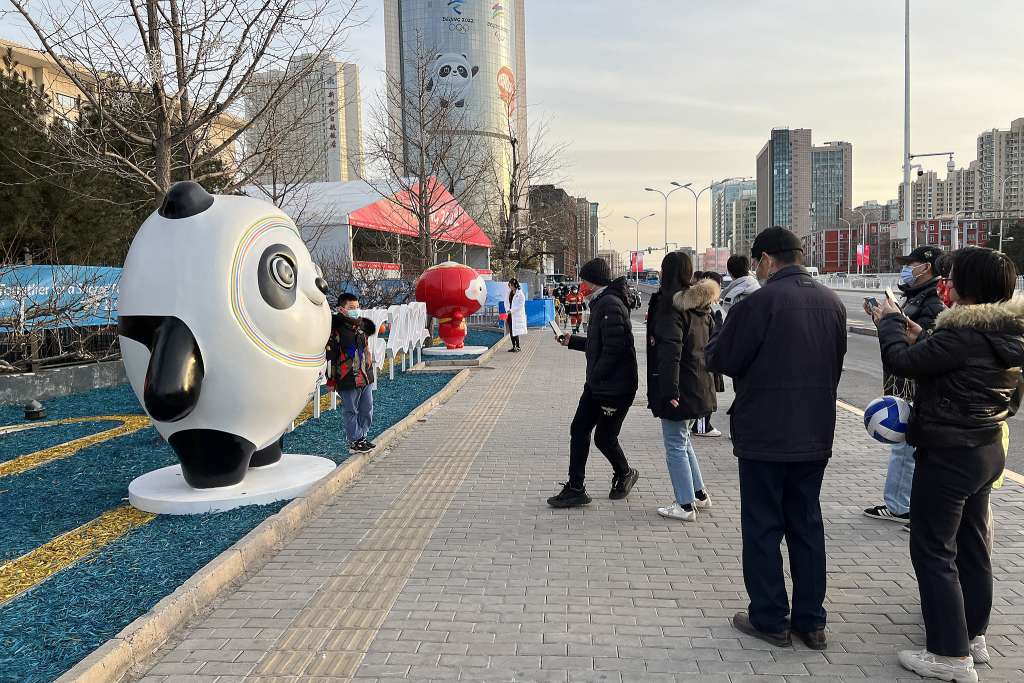SPEND LESS, ACHIEVE MORE – that was the aim of the financial controllers of the Beijing Winter Olympics, and so far it looks like they’ve done it. The total budget has come in at US$3.07 billion, making it usually good value, since the 2018 games cost US$12.2 billion.
How did they do it?
To answer that, let’s look at the bills that will have come in. There are two main groups of expenses, and both are hard to trim. First, and most obviously, we have the operating costs: cash has to be made available for transportation, for doctors and medical support, for telecommunication and related items.
And of course there are infrastructure expenses – massive stadiums and other sports venues are hugely expensive, not to mention the Olympic Village for the athletes and the media center for international press.
OPERATING COSTS
Each Winter Olympic Games involves similar numbers of athletes in similar games, so the operating costs tend to be fairly stable every four years.
This year, the operating costs of the Beijing Winter Olympics were US$1.56 billion, which was funded by different streams of cash, some of which came from the International Olympic Committee, while the rest came from sponsors, businesses and sales of tickets for the Games tickets, and of course from the host coungtry. In this case, the general public could not be invited to attend en masse, and this revenue stream from ticket sales was not available—the shortfall had to be made up from other sources.

INFRASTRUCTURE COSTS
On infrastructure spending, China managed to cut costs using several methods. Infrastructure for the PyeongChang Winter Olympics used about US$10 billion and the equivalent spending in the 2014 Sochi Winter Olympics was much larger, at about US$40 billion, with numerous new structures built from scratch.
But the infrastructure spending for the Beijing Winter Olympics was only about US$1.51 billion – a surprisingly small sum.
The financial controllers saved money various ways. First, they transformed existing facilities and stadiums into new ones.
Second, they rented all the hardware equipment instead of buying it. This saved on maintenance and storage – everything is simply going back to its original owners.
Third, they set up systems whereby they could sell Olympic Village structures for use as residential properties after the Games.
- The National Speed Skating Oval, known as The Ice Ribbon, was the only new venue built.
- The Bird’s Nest stadium was renovated for hosting the opening and closing ceremony of the Games.
- The Beijing National Aquatics, which is better known as the Water Cube, was frozen to become the Ice Cube.
About 65% of the US$1.51 billion infrastructure expense was from private sector investment. The Winter Olympic Villages in Beijing and Zhangjiakou will be sold as residential properties after the Games. Some arenas will become tourism facilities to welcome overseas arrivals.
The revenue of broadcasting the Games events was strong this year, and is expected to hit a record of US$1.1 billion.
BING DWEN DWEN IS A HIT
Merchandise is always a risk, with some mascots being popular and others flopping. But this year, Bing Dwen Dwen, the little round panda which was the official mascot of the Games, was a hit.
Models of the character and related licensed products quickly sold out and long queues were seen for the most popular souvenir shops. They have also become a hit online, with people trading and bidding for the most popular items of memorabilia.

In fact they were so popular that some factories restarted operation during the Chinese New Year holiday to top up the supplies. Sellers hope that to break a merchandizing record of 2.5 billion yuan.
CLOTHES BRANDS WERE BIG
And it’s not just dolls and pictures of them, but clothes as well. After the opening ceremony, the brands wore by athletes from different countries became trending items for searches online. In characteristic Chinese facions, there were live-stream sales of the most popular branded products.
The brands wore by Mainland China’s athletes successfully tapped into markets globally, with ANTA Sports being the biggest winner. The firm provided Mainland China’s national team athletes’ sportswear, but is a bigger brand internationally than you might think.

The well-known international trademark of FILA (which sponsors Hong Kong athletes’ sportswear) in Mainland China, Hong Kong, Macau and Singapore, were acquired by ANTA Sports. Chinese sports apparel and equipment manufacturer Peak Sport also was a big player, sponsoring Olympic athletes from seven countries.
TOURISM BOOST IN THE LONG RUN
And what about tourism? The 2014 Winter Olympics boosted tourism and winter sports development in Sochi, with 6.5 million tourist arrivals each year and over US$30 million revenue to Russia. The hosting of the Beijing Winter Olympic has also helped the push for development in Zhangjiakou, where nine more outdoor skiing resorts and 19 ice skating stadiums were built after 2015, with six million tourist arrivals each year and revenue of 2 billion yuan. There’s solid economic development in Zhangjiakou, with GDP reaching 160 billion yuan in 2020 and 172 billion yuan in 2021.
The winter sports businesses should benefit. The bookings for ski tourism in Chinese New Year in 2022 soared by 30% compared with same period last year. More than 300 million Chinese people are expected to participate in winter sports activities in 2022, with revenue of 300 billion yuan.
Image at the top shows two stadiums used at both 2008 and 2022 Olympics in Beijing — image by Panoramio/ Wikimedia Commons

